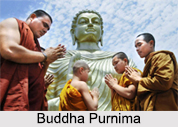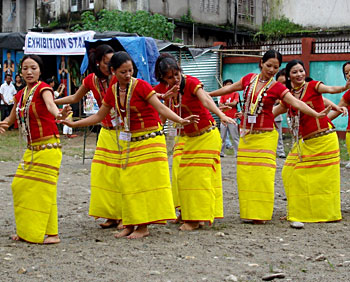 Chhatisgarh is a tribal territory and is known all over the globe for its scenic beauty and unique tribal populations. Hence a plethora of festivals characterizes the culture of this state. The festivals specific to Chhattisgarh lends ethnic overtones to other festivals that are celebrated throughout the Indian subcontinent. The Chhattisgarh festivals are also the best way to understand the multihued culture of India.
Chhatisgarh is a tribal territory and is known all over the globe for its scenic beauty and unique tribal populations. Hence a plethora of festivals characterizes the culture of this state. The festivals specific to Chhattisgarh lends ethnic overtones to other festivals that are celebrated throughout the Indian subcontinent. The Chhattisgarh festivals are also the best way to understand the multihued culture of India.
Important Festivals of Chhatisgarh
The festivals with all their colors and traditions also amalgamate together to give a true reflection of this state, which is so diverse in its riches. The chief festivals of this state include:
Hareli
This festival is held in the month of monsoon. Hareli is observed in the state to seek blessings of the Almighty for a bounteous yield of crops. During this festival the local farmers worship the cows and the farm equipments. They also hang strings of neem leaves on their doors to ward of various kinds of diseases.
Madai
This festival is popularly celebrated by an old tribal community known as Gonds. This festival is also a means to meet relatives settled in different villages across the state. It is also a means of purchasing year long supplies of daily life requirements. The tribal Goddess is honored by offering the sacrifice of a goat beneath the sacred village tree. The nights are marked with unrestrained merriment like non-stop drinking and dancing.
 Bhagoriya
Bhagoriya
This auspicious festival is held a week before the ` festival of colors`. Bhagoriya festival primarily originated in the Bhils and dominated the district of Jhabua. This festival allows the lovers to officially elope. The faithful devoted during this festive occasion worship the God of Dance, Bahgoradev.
Pola
This festival follows the festival of Hareli. Pola is celebrated throughout the state by worshipping bullocks. Children play with idols of the vehicle of Lord Shiva made of clay and fitted with clay wheels. The major event of this festival is a bull race.
Dussehra
Dussehra is the most important festival in the region. It is a ten days event. This festival is believed to have been originated in the 15th century by the fourth Kakatiya monarch, Maharaj Purushottam Deo. It demands the participation of almost all the tribal inhabitants of the state. The tribal people celebrate Dussehra as a congregation of Maoli Devi and all her sisters. Numerous priests bring local deities beautifully embellished with vibrant colored flowers to the Danteshwari Temple in Jagdalpur.
Charta
Charta is a harvest festival celebrated by all communities of Chhattisgarh. During this festival the children go around the village and collect rice from each household. The married females then prepare the rice on the banks of the nearby water body. Men and women sing and dance and eagerly wait for the community feast to be served.
Navakhana
This festival is celebrated in order to mark the harvest of rice. The auspicious ceremony begins with offerings of new harvested rice of the season to the family deity on Navami. During the night some communities have dances and liquor and also consume the first of the new harvested rice.
Surhul
This festival is dedicated to the worship of Mother Earth but has nothing to do with the harvest. The festive celebrations are held after the blooming of Sal trees. During this festival nobody touches the fields throughout the day and the farmers offer prayers at a small forest within the village.
Mati Puja
Mati puja or the `worship of the earth` is a festival of crucial importance in Chhatisgarh where the main occupation of the people is agriculture. During this festival the tribal people of the district of Bastar worship the earth for the bounteous yield of crops for the next season. The religious rites and traditions are also observed by them with utmost devotion and dedication.
Chaitrai
This is an important festival of the Gonds in Chhattisgarh. On the very day of this festival a pig or a fowl is offered to the village God along with some liquor. After this, the tribal group indulges themselves in complete amusement in the form of dance, folklores and other types of cultural performances.
 Nawakhana
Nawakhana
This festival is observed in Chhattisgarh in the bright fortnight of the month of Bhadon or the month of September according to the English calendar. The Gonds on this day offer new grain and liquor to their ancestors. The festive celebrations take different forms in different districts. In the Kondagaon tehsil of the district, Buddha Deo is worshipped on this particular day whereas in the Jagdalpur tehsil the festivities are observed by taking sweets and giving new clothes to the members of the family.
Govardhan Puja
The Govardhan puja is performed in Chhattisgarh with lots of gaiety and festivity and has its origins in the legends of Hindu mythology. On the day of this festival, the people of Chhattisgarh build cow dung hillocks and then decorate them with flowers after which they worship them. In some regions this day is also observed as `Annakoot` meaning `mountain of food`. After the traditional worship comes to an end, an assortment of sweets is offered to the deities also known as `bhog`, following which the people consume the prasad themselves.
Korba Mahotsav
This festival is organized in the Korba district of Chhattisgarh in the month of May jointly by the Korba district administration and other public sector undertakings. The hilly tribe Korwa celebrates this festival with much vigor and enthusiasm following all the religious rites and rituals with extreme feelings of ardent religious zeal.
Kajari
This is another important festival of the region and falls on the same day as that of the Raksha Bandhan or on the Shravan Purnima. This festival holds special significance in the life of the peasants and it is they who celebrate this festival with great fanfare.



















